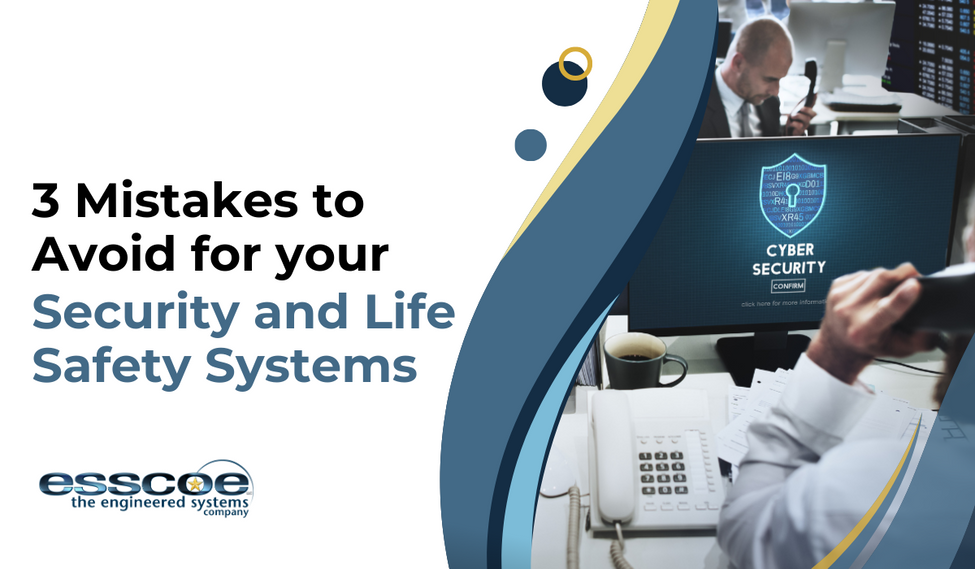
Security and Life Safety Systems are essential features of any facility. Unfortunately, many businesses don’t pay enough attention to the health of their systems until it’s too late.
Don’t wait for a disaster to reveal the weaknesses in your workplace safety. Take proactive steps to help avoid these three common mistakes companies make regarding their Security and Life Safety Systems.
Falling Behind on Routine Maintenance
After system installation is finished, many facilities believe that’s the end of it. They don’t check in on their systems, and other than the occasional required test or inspection, they just leave it be. As amazing as it would be to never need to check in on your systems, that unfortunately is not the case.
Security and Life Safety Systems are like any other machine, they will degrade over time. Mechanical parts wear down, storage media becomes fragmented, electrical circuits fail, batteries lose their charge, and eventually, the system will stop working entirely.
To prevent this, routine maintenance is required. Don’t just stick to the bare minimum. Regularly inspect your systems to ensure everything is in proper working order, making sure to document your findings and communicate with technicians to fix any problems. Taking a proactive approach of identifying potential issues before they become critical problems is essential to ensuring the safety and wellbeing of everyone at your facilities.
Mismatched equipment & system incompatibilities
Another common mistake often occurs before the emergency even happens. Using equipment or systems from different manufacturers can cause incompatibilities leading to system failure. Different systems may not be able to properly communicate with each other. Firmware mismatches can arise when a new enhanced version of the user interface (i.e. the VMS, Video Management System) platform rolls out with a lot of neat new features, users are often quick to adopt it. However, if they overlook updating their camera’s firmware (or other edge devices) to ensure compatibility with the VMS, it is likely that the camera’s video will no longer record because of the outdated firmware at the edge device, like a critically positioned camera.
Ensuring all your Security and Life Safety Systems are able to effectively communicate and work together in one integrated system is essential for keeping your facilities safe. Determining which systems are compatible with each other can be difficult, but system integrators like Esscoe can help! Esscoe is one of the few systems integrators able to equip an entire building system with access control, fire alarm, surveillance video, paging, mass notification, and rescue assistance systems.
Ignoring Staff Education
A common expression among Navy Seals is: “In moments of stress, human beings don’t rise to the occasion but instead sink to the level of their training.” Your staff need regular training on how to respond to emergencies, as during a real emergency situation they won’t have time to find the emergency plan and read it over.
Ensure staff have the opportunity to practice for potential emergencies. Teach staff where to find escape routes, what surveillance cameras to monitor, the location of emergency equipment like fire extinguishers, and how to properly use emergency notification systems. Not only that, but encourage preventative behaviors like proper flammable material storage as well. Training is of the utmost importance to ensure that when an emergency happens, everyone knows how to respond.
It’s also essential to refresh your staff’s training regularly. Training is perishable, if staff don’t have the opportunity to revisit those concepts, they will likely forget most if not all of their training.
Keeping these three common mistakes in mind will help you ensure safety in emergency situations. Take a proactive approach and avoid these mistakes before they turn into a disaster.